|
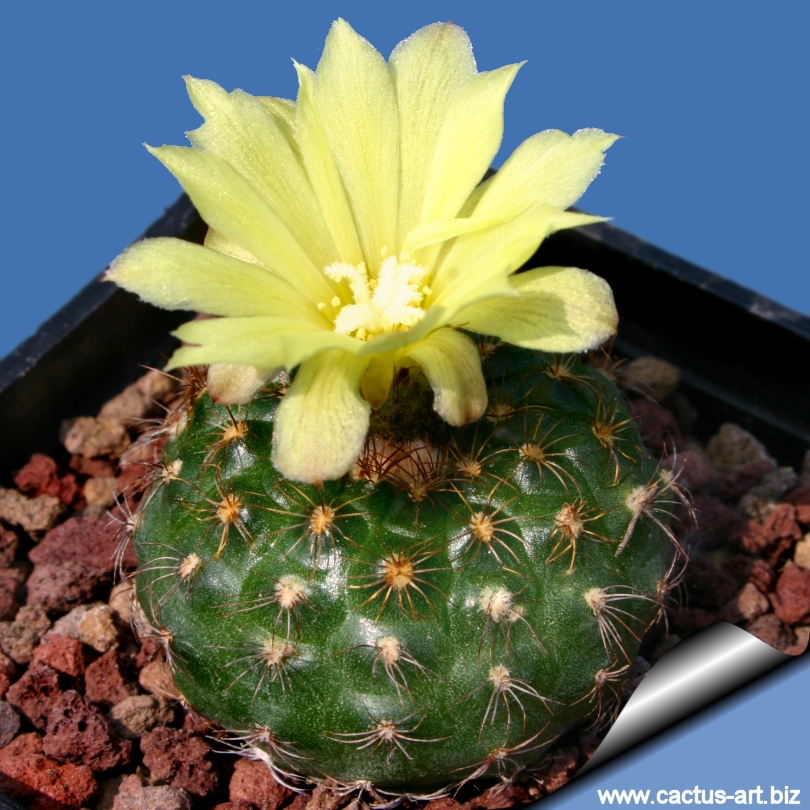
Frailea schilinzkyana
On summer days one can admire the splendour of its beautiful
yellow flower, larger than the plant itself.
|
|
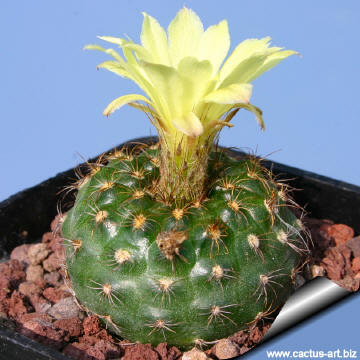 |
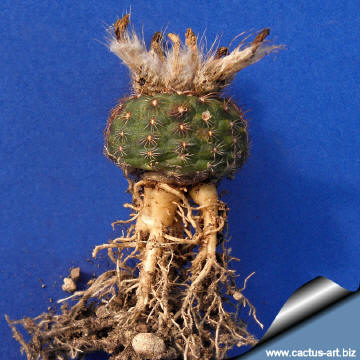 |
|
. |
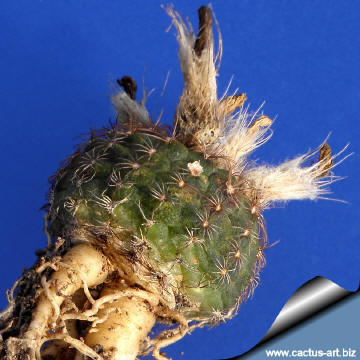 |
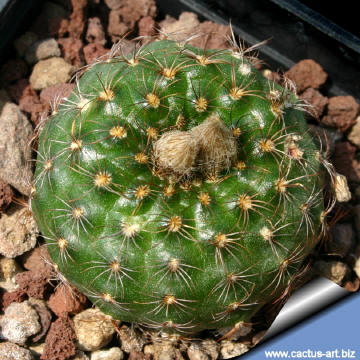 |
|
Frailea schilinzkyana is a
tiny odd & species with small heads and friendly short spines.
Eventually it will form small clumps. |
|


Advertising
|
|
|
|
|
Family:
Cactaceae (Cactus
Family)
Subfamily: Cactoideae
Tribe: Notocacteae
Origin: Argentina & Paraguay (South America)
Type locality: Meadows near the River Paraguari, Paraguay.
Habitat:
Grows on grass plains.
Scientific Name:
Frailea schilinzkyana (Haage jr.)
Britton & Rose 1922
Conservation status:
Listed in
CITES Appendix II
Etymology:
The
genus name
"Frailea"
remembers
the Spanish "Manuel
Fraile",
born in 1850,
who was responsible for the
cactus
collection of the
United States
Department of Agriculture
at the end of the XIX century.
The
species has been named Guido von Schilinzky, Russian
plant devotee (27 March 1823 - 16 Sept. 1898)
Original Publication:
Echinocactus schilinzkyanus Haage jr. in Schumann
In: Monatsschr. Kakteenk. 7: 108. 1897.
Synonyms:
- Cactus schilinzkyanus Kuntze,
Deutsch. Bot. Monatsschr. 21: 193. 1903
- Frailea schilinzkyana ssp. concepcionensis
- Frailea ignacionensis
- Frailea concepcionensis
- Echinocactus schilinzkyanus
- Frailea ybatense
- Frailea perumbilicata
|
|
|
|
Desciption: Frailea
schilinzkyana is a very small cactus that remains solitary or (occasiaonally)
somewhat cespitose.
Stem: It is diminutive in size, about 3 cm in diameter, depressed
globular and somewhat flattened and umbilicate above, (wider than
taller). Medium dark brownish green
Ribs: 10 to 13, but very indistinct, more or less spiraled,
strongly tubercled
Areoles: Placed on the upper side of the
tubercles.
Radial spines: About 12 to 14 short (2 to 3 mm long) which vary from
yellow to dark tannish-brow n or blackish in colour, more or less
appressed and reflexed.
Central spines: Solitary, stouter than the radials.
Roots: Fat central tap root.
Flower: Yellow small,
infundibuliform, often cleistogamous (Even when their flowers do not
open, they still form fruits with many seeds)
Blooming season: Flowers will open only in great heat,
in the hottest, brightest, afternoon sun, if at all.
Fruit:
Dry,
indehiscent, that detach easily, yellowish,
pericarp
membranous, fragile that break easily,
releasing the seed.
|
|
Cultivation:
Fraileas are are tiny plants with comparatively big yellow flowers,
often bigger than the whole plant itself and are especially suitable for
those with limited growing space. They can be easily grown in a sunny
windowsill or a small greenhouse. The secret for keeping Fraileas happy
and growing is to pot them in a rich, porous soil with good drainage and
aeration, to give them lots of water and let them dry out between
waterings. Fraileas do like more water than most other cacti. If you
over-pot them (in about 6-7 cm pots) they grow much better and
healthier, as they can be quite short-lived if not given correct growing
conditions. During winter they like cool and dry places
(minimum temperature of 5-10° C)
but even light frosts do not harms
them. Characteristically, during the
dry season plants
retract completely
under the ground, both in the
wild and in
cultivation too. Occasional light spray of water during the winter
helps plants from shrivelling up too much. In the summer they like the
pot to be filled with rainwater (which is always better to use
than tap water) quickly absorbed by the plants, and one can almost see
the little bodies swelling up. After a day or two, it is best to drain
off any remaining water in the under-pots.
Sun Exposure: They
enjoy full sun.
In a
shaded position the plants grow faster, but are not
flat shaped or dark
coloured.
Propagation:
With fresh harvested seeds or (rarely)
by
grafting. The seeds germinates well. Sow the them on the soil
surface, so that they can grow to a reasonable size before they have to
be pricked out into a bigger tray. The seed trays go into a heated
propagator on a windowsill where they catch the afternoon sun. It does
not take long for the seeds to germinate, and some will do so within a
day or two after sowing. When they have reached a height of about 1 cm
they are pricked out into a larger tray, where they remain until they
are large enough to go into individual pots.
|
|